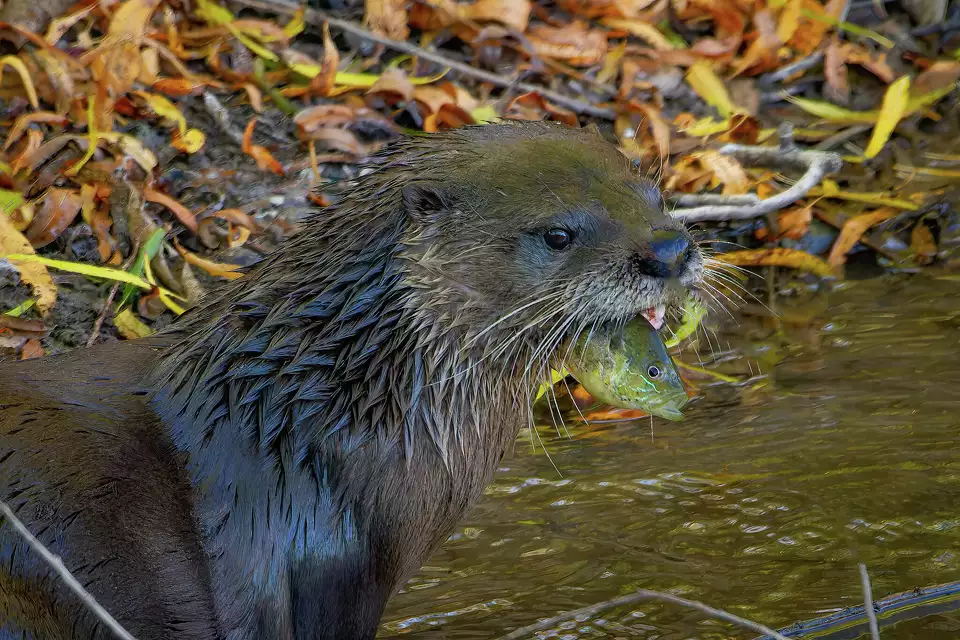Texas photographer gets a rare look at frolicking otters
Once widely distributed through Texas, their range has been limited by hunting, trapping, and habitat loss.
By Ariana Garcia,Assistant News EditorDec 11, 2024
Paul Marto, Marto Photography, 2015
A Texas photographer went out to capture photos of migrating birds over the weekend when he encountered something even more remarkable. On Saturday afternoon, Paul Marto, a sales consultant and wildlife photographer, made a trip to Bonnie Wenk Park in McKinney to photograph a kingfisher and hooded mergansers previously spotted at a pond. "From a birding perspective, McKinney, Fairview, and Dallas is this big kind of migration highway," Marto told Chron. "So, on any given time of the year, there's always cool species that are coming through and cool opportunities to track down some neat birds."

However, it wasn't birds that caught Marto's eye this time around. While approaching the pond, he noticed a lot of movement in the water. Upon closer inspection, he discovered the source was a pair of river otters. Currently found in the eastern half of the state, river otters were once widely distributed throughout the state, including the Panhandle, north-central, and southern Texas. While not considered an endangered species, their populations drastically dwindled due to habitat loss, water pollution, uncontrolled trapping and hunting of their fur. But the creatures are on the rebound.

The river otters were hunting for fish when Paul Marto spotted them.
Paul Marto, Marto Photography, 2015
With an overcast sky and cold temperatures, Marto was the only one at the park, so he didn't have anyone to share the discovery with at the time. "When I saw them out there, I was blown away. I thought 'Oh, this is great,'" Marto told Chron. "I hope they don't spook when they see me."

While hidden behind weeds a short distance away, Marto managed to spend 15 minutes photographing the elusive otters as they hunted for fish and swam around. Late afternoon shadows made getting clear shots of the rarely seen semi-aquatic mammals a challenge. "There's a bunch of trees and branches, so it's not ideal in the afternoon," he said. "It's challenging because they move so fast. As soon as I would get focused, they'd go into the water and then pop up all the way on the other side for just a moment."

Paul Marto, Marto Photography, 2015
Still, Marto was able to capture the skittish otters as they resurfaced on land or a floating log to eat their catch. In one photo, the otter is shown facing toward the camera, its open mouth holding a fish eyeball. When Marto tried to get a better vantage point, the otters noticed him and quickly disappeared. "One that was eating a fish on a log looked right at me and within like five seconds, the water was still and they were just gone," he said. "It's really kind of funny."
Marto posted the photos on a Texas state parks Facebook group, where members reacted excitedly. "Good pics. Very out of the ordinary," read one comment. Growing up in California and having moved to McKinney from Salt Lake City in 2021, Marto said he'd only seen river otters once before at Bonnie Wenk Park about a year or so ago. Two months ago, he also spotted river otters at a river in Connemara Meadow Nature Preserve. "I've got buddies that frequent the park and they're like, 'We come here hundreds of times and have never seen them. And Paul, who's relatively new to this park, comes out within a couple visits, he's not getting a picture of the river otter,'" he said.
With conservation efforts and better river management, sightings of the river have become more frequent in recent years. In April, river otters were spotted in the San Marcos River for the first time in more than 70 years. "With all the development that's taking place that's ultimately destroying their habitats," Marto said. "I think that probably contributed to their demise or their decline and hopefully now with conservation efforts in place and some of these other parks remaining untouched, it's allowing them to make a resurgence." |








